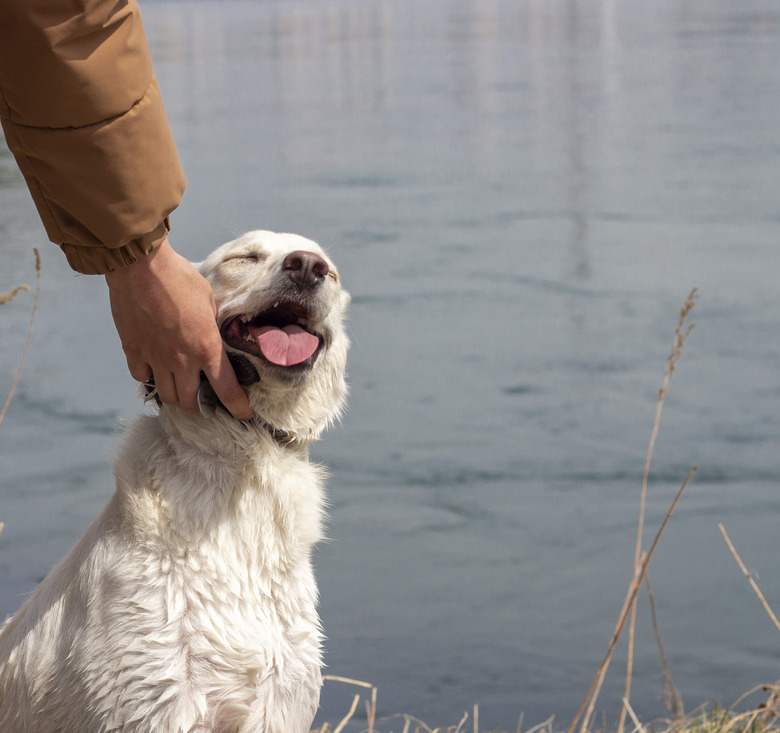What Are The Causes Of High Potassium In Dogs?
Potassium is an electrolyte that is found in the cells and blood of your dog's body. An ideal potassium level is essential for controlling your dog's nerve impulses, brain function, and muscle activity. It also plays a vital role in regulating your dog's heart function.
Normal and abnormal potassium levels in dogs
Normal and abnormal potassium levels in dogs
The normal reference range for a dog's blood potassium level falls between 3.6 and 5.5 mEq/L. When a dog's potassium level dips too low, the condition is referred to as hypokalemia. Conversely, if their potassium level climbs too high, your dog is suffering from hyperkalemia. Your dog's potassium level is determined by performing a blood chemistry profile.
A dog's kidneys are responsible for filtering wastes from your dog's blood so that they may be expelled from your dog's body when they urinate. Optimal kidney function is vital to maintaining healthy levels of enzymes, minerals and other important substances, including potassium.
Diagnosis of hyperkalemia in dogs
Diagnosis of hyperkalemia in dogs
Signs of high potassium in dogs may include:
- Intermittent gastrointestinal symptoms, such as diarrhea and vomiting
- Lethargy
- Weakness
- Collapsing of body
- Paralysis in which the limbs cannot move, but remain flexible
Warning
Hyperkalemia is an emergency condition that requires immediate veterinary intervention. Dogs who are showing signs of hyperkalemia also will develop cardiac arrhythmias, which are disturbances in the heart's rhythm.
Your veterinarian will perform an electrocardiogram on your dog to assess heart rate and rhythm. He or she will review your dog's medical history and ask questions regarding your dog's recent activities, including drinking and urinating frequencies. Diagnostic tests will include a complete blood count, a blood chemistry profile and a urinalysis. Additional blood tests and radiographs may be ordered to determine the underlying cause of hyperkalemia.
Causes of hyperkalemia in dogs
Causes of hyperkalemia in dogs
When your dog's kidneys no longer function optimally, potassium and other wastes build up in your dog's system. Acute anuric, meaning no urine production, and acute oliguric, meaning low or severely decreased kidney function, can occur. Kidney failures are the most frequent causes of hyperkalemia in dogs. Some common causes of acute kidney failure include antifreeze ingestion and leptospirosis infection. Chronic kidney disease is more commonly seen with levels of low potassium. However, it can result at times from high levels of potassium. Chronic renal failure also can result in hyperkalemia. Additional causes of hyperkalemia in dogs include:
- Addison's disease, or hypoadrenocorticism, a condition in which a dog has abnormally low levels of corticosteroid hormones
- Poorly regulated diabetes in which ketoacidosis is present
- Bladder or kidney stones that cause urinary obstruction in males
- High blood platelet count
- Certain cancers
- Severe bacterial infections, such as pyometra, which is a life-threatening uterine infection
- An overdose of potassium bromide, which is commonly used to control seizures
- Certain medications, including some antibiotics and cardiac drugs
A condition known as pseudohyperkalemia is a common finding in cases when the dog is healthy, but excess potassium is leaked from the cells when blood is drawn for laboratory testing. This is considered a false hyperkalemic result, and pseudohyperkalemia tends to occur in the Asian dog breeds, such as the Akita, the Shiba Inu and the Shar-Pei.
Treating hyperkalemia in dogs
Treating hyperkalemia in dogs
The treatment for hyperkalemia includes an immediate reduction in the dog's potassium level, which is accomplished with intravenous sodium chloride fluid therapy, and treatment of the underlying cause. If the underlying cause is ketoacidosis, for example, insulin therapy and other treatment protocols to regulate the patient's diabetes are administered.
While the dog is being treated for hyperkalemia, electrocardiograms will be repeated to monitor the dog's cardiac activity, and bloodwork will be repeated to monitor the progress of reversing the dog's hyperkalemic state. Hyperkalemic patients who are left with residual chronic kidney disease may be placed on a low potassium prescription kidney diet.
